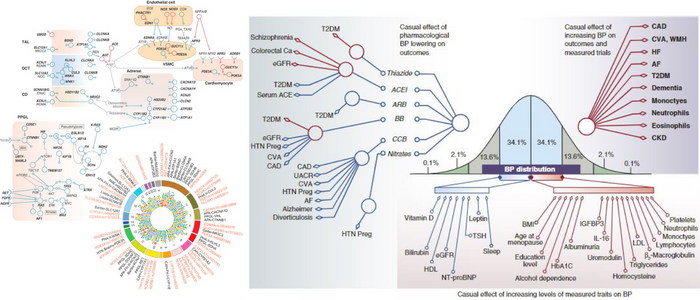A genomic deep field view of hypertension
Published: 28 November 2022
Congratulations to hypertension group on their new paper "A genomic deep field view of hypertension"
A genomic deep field view of hypertension
Pranav S. Garimella, Clea du Toit, Nhu Ngoc Le, Sandosh Padmanabhan
Blood pressure is regulated by a complex neurohumoral system including the renin-angiotensin-aldosterone system, natriuretic peptides, endothelial pathways, the sympathetic nervous system, and the immune system.

Keywords
Nearly 10 million deaths globally per year are attributable to hypertension, making this the commonest modifiable cardiovascular risk factor in both developed and developing countries. The health burden from hypertension arises from strong, continuous, positive relationships between blood pressure (BP) and coronary artery disease (CAD), heart failure, stroke, myocardial infarction, atrial fibrillation, peripheral artery disease, renal failure, and cognitive impairment. Hypertension is defined by a threshold at the upper end of the BP distribution at which the benefits of action (i.e., therapeutic intervention) exceed those of inaction. This simple yet powerful dichotomization has enabled clinical and public health strategies to reduce the global burden of hypertension but belies the underlying complexity of BP regulation and hypertension causation involving the renin-angiotensin-aldosterone system, natriuretic peptides, endothelial pathways, the sympathetic nervous system, and the immune system.
Sodium pathways
A direct relationship between excess Na+ intake and hypertension has been well recognized for a long time and further confirmed by epidemiological studies and clinical trials. This implied that perturbations in physiological pathways that maintain Na+ homeostasis may be the underlying cause of hypertension. A majority of the early monogenic BP syndromes involved mutations in genes in the kidney tubules and adrenal glands with roles in tubular Na+ transport mechanisms, suggesting the importance of Na+ in BP regulation. GWASs have also identified single-nucleotide polymorphisms (SNPs) near genes involved in Na+ pathways with varying levels of functional validation.
First published: 28 November 2022

